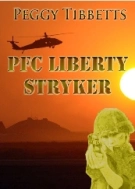I have an idea for a children’s picture book about a real life archeological discovery. I need to know some legal guidelines. I’m not sure if I need to get permission to use the real names of the scientists in a work of nonfiction. Would a nonfiction picture book be considered creative nonfiction or historical nonfiction?
Creative and historical are both elements of nonfiction. In Susan Taylor Brown’s article Creative Nonfiction: A True Story Well-Told, she quotes several editors’ viewpoints on creative nonfiction. Here are just a few of the comments from her article:
“At its best, creative nonfiction imparts this necessary information in a way that captivates young readers, excites their imaginations, and sparks an interest in learning more.”
— Reka Simonsen, Editor, Henry Holt and Company
“Good creative nonfiction helps kids learn to think by engaging their curiosity. It makes readers ask, `Then what happened? Why?’ and so on.”
— Shannon Barefield, Sr Editor, Lerner Publishing Group
“Nonfiction is creative when it presents concepts or information in an entertaining manner.”
— Jean Reynolds, Publisher of The Millbrook Press
Be sure to read the full article. Brown presents an in-depth discussion with several editors explaining the aspects of creative nonfiction. It is well worth the read. The editors also delve into the problems that arise when creative nonfiction goes too far.
In his book The Complete Idiot’s Guide to Publishing Children’s Books, Harold Underdown writes: “When you take a nonfiction concept – let’s say the planets of the solar system – and weave a story line or dramatic anecdotes into the facts, you’re ‘dressing the facts in fiction’, a technique sometimes called creative nonfiction.”
The only legal guidelines that apply have to do with copyright. As a nonfiction writer, you are the same as a journalist. You cannot publish in whole, or in part, the text from any existing publications about the archaeological discovery without permission. The text you write must be written by you. A nonfiction story is really no different than an article. The facts are the basis for your story.
Just like a journalist/reporter, you don’t really need “permission” from the scientists. They were involved in an historical event and you are writing about it. However, it’s always a good idea to make contact with family, co-workers, or friends connected to the people in your story, or the actual scientists themselves, anyone who is living and willing to talk about it. Seeking the cooperation of family members or the scientists in your research will enhance your story. You will learn details that will make your story more colorful and interesting. If they would rather not cooperate for whatever reason, you can still write the story. But I have never run into that problem while writing a story. In general, people who witnessed or were involved in historical events are happy to talk about their experiences.
Just remember that research is the best part of the journey to the story you want to tell.
Click here to add Advice from a Caterpillar to your RSS reader.





March 8th, 2016 → 10:59 am
[…] http://www.susantaylorbrown.com/creativenf.html http://www.schoollibraryjournal.com/article/CA6494166.html http://inkrethink.blogspot.com/ http://www.institutechildrenslit.com/rx/wt06/creativenonfiction.shtml http://www.darcypattison.com/picture-books/how-to-write-a-creative-non-fiction-picture-book/ http://www.creativenonfiction.org/thejournal/whatiscnf.htm http://www.edwardhumes.com/articles/narrative.shtml https://advicefromacaterpillar.wordpress.com/2010/05/14/would-a-nonfiction-picture-book-be-considered… […]